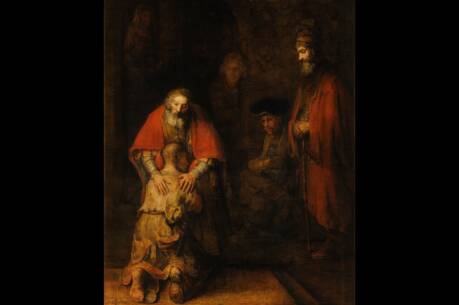A King in Disguise
The liturgical year concludes with this relatively new feast, instituted by Pope Pius XI in 1925 to celebrate the jubilee year and the 16th centenary of the Council of Nicaea. It also affirmed the primacy of Christ in the face of rising nationalism and fascism. The scriptural motifs are similar to those of the Ascension: the exaltation and rule of Christ. Along with the readings from the 33rd Sunday in Ordinary Time and the First Sunday of Advent, they look to the second coming of Christ in glory and complete the cycle of the mysteries of Christ from birth to unending reign.
Yet kingship evokes ambiguous responses today. Royal weddings and funerals attract millions of viewers enthralled by solemn ritual and ceremonial elegance more than by a sense of awe at the power of monarchy. Women, and most men, reject the patriarchal overtones of kingship, especially in a nation that was founded in revolt from a king. Yet the readings are rife with the paradox that the kingship celebrated is in direct opposition to either outmoded or dominant claims to power.
Written in a time of severe persecution, the Book of Daniel celebrates the enthronement of one like a son of man (lit. one in human form), in contrast to the crumbling powers of the world empires. Daniel later indicates that this human one symbolizes the vindication of the holy ones of the Most High, the suffering people (Dan. 7:27). The Gospel presents one of the most dramatic scenes in the New Testament, in which an arrogant Pilate learns ironically that Jesus is a king, but not the kind he can deal with. When asked if he is a king, Jesus does not claim the title king but replies, My kingdom does not belong to this world. This does not mean that Jesus has proclaimed and enacted a purely spiritual or otherworldly kingdom, but that his present and future reign does not operate according to the world’s criteria of power and dominance.
Jesus further redefines his kingship as being a witness to the truth. The words truth and true, used 39 times in John, are multivalent terms with overtones of non-concealment, disclosure of God’s wisdom and plan of salvation and the reliability of Jesus’ words. Jesus speaks the truth about God and humanity, which humans can reject, as the way, the truth and the life, and accepting such truth brings true freedom (8:32). When faced with the truth of Jesus, people in John’s Gospel must chose to believe or reject Jesus. Pilate here becomes the parade example of the fence-sitter, who can at best muster a cynical response to Jesus, What is truth? (18:38, unfortunately omitted from today’s reading). He is a person who having failed to listen to the truth and decide in its favor [so that] he [and] all who would imitate him inevitably finish in the service of the world (R. E. Brown, John, Anchor Bible, p. 864).
To celebrate Christ as king is to enter into the deepest mysteries of faith. Jesus, bound and seemingly powerless before Pilate, the symbol of a powerful empire that holds the scales of life and death, is the true king who possesses the power to grant a life that never ends. All who belong to the truth will be followers of this king and will hear his voice. This truth is not revealed in dominating power but by suffering witnesses.
This Gospel summons to decision not only Pilate, but the church today as well. Johannine truth suggests an authenticity between belief and practice, a faithful witness that embodies the teaching of the Johannine Jesus. John’s Jesus is the friend who gives his life for others and washes their feet as a symbol of that loving service they are to embody. He is the Good Shepherd who not only seeks the lost, as in the Synoptic Gospels, but lays down his life for the sheep. Jesus’ kingdom does not belong to this world because it rejects the way of violence (18:36) and domination and the pretensions that mask truth. Pilate stands before Jesus and asks, What is truth? As people stand before the church today, will they ask the same question?
This article also appeared in print, under the headline “A King in Disguise,” in the November 18, 2000, issue.







